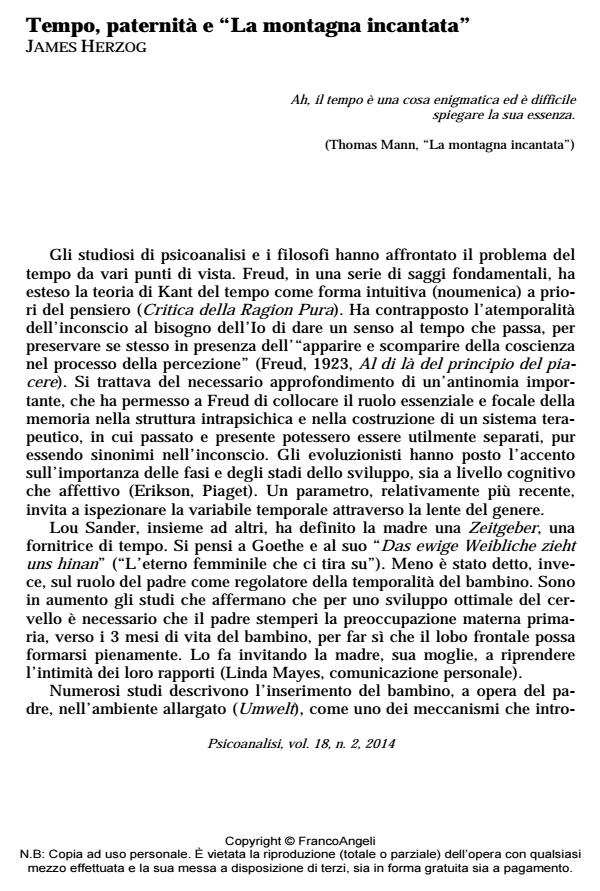Tempo, paternità e "La montagna incantata"
Journal title PSICOANALISI
Author/s James Herzog
Publishing Year 2015 Issue 2014/2
Language Italian Pages 15 P. 5-19 File size 58 KB
DOI 10.3280/PSI2014-002001
DOI is like a bar code for intellectual property: to have more infomation
click here
Below, you can see the article first page
If you want to buy this article in PDF format, you can do it, following the instructions to buy download credits

FrancoAngeli is member of Publishers International Linking Association, Inc (PILA), a not-for-profit association which run the CrossRef service enabling links to and from online scholarly content.
This paper discusses the analysis of a young man plagued by drug use and a sadomasochistic perversion. His analysis revealed the ways in which his father’s sexual conflicts and his parents’ marital difficulties had been transmitted to my analysand. He and I were both deeply influenced in our exploration and in our evolving understanding by Thomas Mann’s great novel "The Magic Mountain".
Keywords: Time, transmitted trauma, father and son relationship, "The magic mountain"
James Herzog, Tempo, paternità e "La montagna incantata" in "PSICOANALISI" 2/2014, pp 5-19, DOI: 10.3280/PSI2014-002001